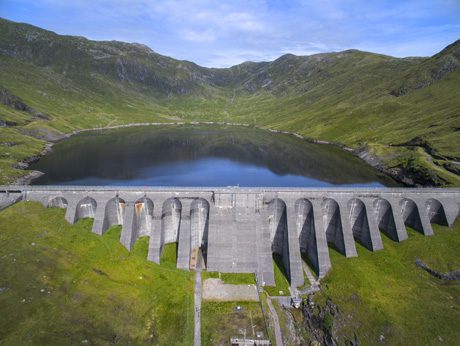
20 benefits of technology highlighted – along with challenges and solutions
A new report outlining the investment case for pumped storage hydro has set out 20 key benefits of the technology’s UK expansion.
The full report can be downloaded from here.
The DNV GL study, funded by the Scottish Government, SSE, and ScottishPower, also identifies the political and economic barriers facing “one of the most cost-effective options for grid-scale energy storage”.
The GB electricity system already benefits from 24GWh of pumped storage capacity, split across four sites, largely in Scotland.
Around another 50GWh has planning permission – enough to cover close to the UK’s total peak electricity demand for an hour.
The report, titled The Benefits of Pumped Storage Hydro to the UK, outlines the benefits of the technology.
Summarised, they are:
– Providing system services and alleviating network congestion costs by storing excess generation in constrained zones for later use, thereby avoiding or deferring investment in network reinforcement
– Avoiding waste of low carbon electricity during periods of low electricity demand, and avoiding the environmental impact of new transmission infrastructure
– Security of supply: pumped storage hydro is the most economical storage technology for the long discharge periods required to contribute to security of supply.
The impacts of failing to invest in pumped storage are also spelled out in the report. They include:
– Likely increased use of flexible gas-fired and diesel generation which will increase greenhouse gas emissions, and may increase electricity bills for end consumers
– Curtailment of variable renewables like wind and solar which will limit their contribution to reducing greenhouse gas emissions, increase costs for consumers and affect the investment economics of renewables.
Hannah Smith, Policy Officer for Scottish Renewables, said: “It is important that government creates the right policy environment to encourage investment.
“We would like to see a more level playing field for pumped storage hydro which reflects the value it can bring to the electricity system.”
Mike Seaton, SSE’s Director of Development, said: “It is clear from the report that pumped storage can and does play a significant role in making the UK’s electricity system more efficient, reliable and secure for the future. At a stroke, SSE’s consented 30GWh Coire Glas project would more than double the total amount of current pumped storage capacity in the UK.
“We’d like to see all parties working closely together to examine what steps can be taken to remove investment barriers which prevent new pumped storage projects being built.”
Neil Clitheroe, CEO ScottishPower Generation Holdings, said: “Pumped storage hydro is the most cost effective form of large-scale electricity storage and can help us make the most of the green megawatts we already produce and thus meet global climate change targets. Scotland has the landscape and resource potential to deliver a new generation of pumped storage hydro projects.
“We do not need subsidy to invest in electricity storage, but we do need a Government policy that would support our investment, and we will continue to work with Holyrood and Westminster to find common ground.”
Paul Wheelhouse, Minister for Business, Innovation and Energy, said: “This report outlines the huge opportunity around pumped storage hydro. This tried and tested technology can support peak demand and effectively store greater levels of electricity at times when renewable energy output is high but demand is low.
“This part of the hydropower industry needs a supportive policy and market framework – such as a ‘cap and floor’ mechanism, as is used for interconnectors – and I call upon the UK Government to heed calls from the sector and work with the industry and Scottish Government to remove investment barriers that prevent new pumped storage hydro projects being built.”
The report calls for a radical overhaul of the way pumped storage’s benefits are quantified, largely in a bid to reduce uncertainty in a sector in which capital-intensive assets can operate for more than 50 years.
Other recommendations in the report include:
– Develop market mechanisms which reflect the value pumped storage hydro brings to the electricity system
– Government and regulators work together to reduce the risk presented by policy decisions
– Government to consider the introduction of a cap and floor style mechanism, as used by interconnectors (which have a similar investment profile to pumped storage hydro)
– Government to ensure that network charging arrangements are fair and considered through a holistic review.






